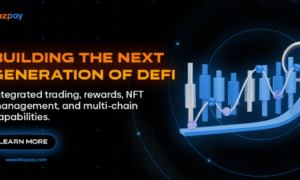Marketing technology is consolidating. The winners are teams that automate relentlessly, capture first-party data, and apply AI where it actually moves the needle.
TL;DR: Start with automation, standardize your first-party data, then layer in AI for planning, creative, and media. Keep the stack lightweight, measurable, and reversible.
1) Design for Outcomes, Not Tools
Before you evaluate platforms, define three outcomes you must achieve in the next 90 days:
- Reduce manual work by 5–10 hours per week via reliable automations.
- Improve data fidelity with clean first-party data you trust in dashboards.
- Increase profitable reach by testing AI-assisted targeting under tight guardrails.
Every tool should map to at least one outcome. If it doesn’t, it’s nice-to-have. This discipline limits bloat, shortens onboarding, and keeps the CFO happy. For ongoing playbooks, a pragmatic resource hub like The Blogpost helps align content, SEO, and campaign documentation in one place—so processes survive staff turnover and platform changes.
2) Automate the Boring Stuff First
If a task is repeatable and rules-based, automate it. Workflow platforms let technical marketers orchestrate data movement and campaign triggers without building a full backend. One of the most versatile choices is n8n Workflow Automation.
Why n8n stands out
- Open & extensible: hundreds of nodes for CRMs, ad platforms, spreadsheets, email, and webhooks.
- Event-driven: trigger flows on form fills, lead-score thresholds, or checkout events.
- Cost-efficient: self-host or use cloud; scale as complexity grows.
Starter automations to set up this week
- Lead enrichment & routing: on form submit, enrich with firmographics, score, route to the right AE, and send a tailored email sequence.
- Creative intake → asset naming → storage: standardize filenames, compress images, and sync to your DAM automatically.
- UTM governance: validate UTMs, append missing parameters, and reject invalid links before they go live.
- Slack & email alerts: real-time pings for anomalies (CPC spikes, conversion dips, API failures).
The ROI is immediate: less swivel-chair work, fewer errors, and faster time-to-launch.
3) Treat First-Party Data as a Product
AI is only as good as the data it sees. Build a thin but durable data layer:
- Event schema: document the top 15–25 events and properties powering reporting and automation (e.g., signup_started, trial_activated, plan_upgraded, churned).
- Identity resolution: use stable user IDs; avoid duplicates via email/domain normalization.
- Consent & governance: capture consent states, region, and retention windows to stay compliant.
- Single source of truth: a warehouse with simple dbt models beats scattered spreadsheets.
Once your house is in order, you can safely activate AI across planning, creative, and media without hallucinated insights or garbage-in/garbage-out reporting.
4) Add AI Where It Compounds: Targeting, Creative, and Planning
a) Targeted ads (with guardrails)
AI accelerates audience discovery, creative clustering, and budget shift recommendations. A practical primer is meta ai, which breaks down how next-gen models drive creative matching and contextual relevance across paid social. Keep three rules:
- Start narrow: one market, one offer, one KPI (e.g., qualified demos).
- Version fast, not random: generate 5–8 creative variants around a single concept; measure lift per concept, not per ad.
- Holdout cells: always run a baseline ad set for clarity on AI’s incremental impact.
b) Creative generation & testing
Use AI to produce structured variants: headlines at three lengths, body copy in two tones, visuals in two motifs. Lock your brand voice (style guide + examples) so outputs are consistent. Feed performance back to the prompt library to refine future iterations.
c) Forecasting and budget planning
Let models propose budget shifts, but you define the constraints: target CAC/LTV, minimum sample sizes, and stepwise increases. AI should recommend; humans should approve.
5) A Lightweight 7-Tool Stack That Scales
You don’t need 40 logins—you need a portable core:
- CMS + SEO for compounding traffic (editorial calendar + technical hygiene). A hub like The Blogpost keeps content ops and briefs consistent.
- Analytics & Warehouse for a trusted truth-set (GA4 + warehouse + dbt basics).
- CDP or events pipeline to standardize tracking (Segment, RudderStack, or open-source collectors).
- Automation via n8n Workflow Automation to orchestrate processes across tools.
- Engagement (ESP/marketing automation) for lifecycle journeys powered by behavioral events.
- Paid media platforms with AI features—guided by principles in meta ai.
- Dashboarding (Looker Studio, Metabase) for read-only exec views.
Litmus test: if any vendor disappears, your stack survives with minimal refactoring.
6) Measurement Leadership Actually Trusts
To prove impact—and win more budget—standardize how you measure:
- North-star metrics: pick 1–2 that map to revenue (e.g., sales-qualified pipeline, subscribed MRR).
- Experiment design: pre-register tests, run power analysis, and use minimum detectable effect; end tests on data, not on vibes.
- Attribution mix: run MMM/geo tests quarterly and MTA for day-to-day optimization; reconcile both in one decision memo.
Dashboard essentials
- Channel ➜ qualified pipeline (not just leads)
- CAC payback by cohort
- Creative concept leaderboard (group ads by idea, not by ID)
- Anomaly watchlist (cost spikes, broken pixels, conversion drops)
When in doubt, kill vanity metrics. Executives care about durable growth.
7) A 30-Day Implementation Plan
Week 1 — Map & prune
- Audit tools, kill overlaps, and list the top 10 manual tasks.
- Define your event schema and KPI glossary.
Week 2 — Automate
- Deploy 3–5 n8n flows: lead enrichment/routing, UTM governance, creative intake, anomaly alerts.
- Centralize campaign briefs in The Blogpost for repeatability.
Week 3 — Data & reporting
- Pipe clean events to the warehouse, build three dbt models, and publish a single executive dashboard.
Week 4 — AI pilots
- Launch a controlled paid-social test using the principles in meta ai.
- Generate structured creative variants; report lift by concept, not ad ID.
- Document learnings and bake them into your prompt and creative libraries.
By day 30, you should see less manual thrash, clearer reporting, and early performance lift—without mortgaging the roadmap.
Final Thought: Compound, Don’t Chase
The teams that win in 2025 will be the ones that compound: automate first, govern data, then apply AI where it measurably improves outcomes. Keep your stack thin, your experiments disciplined, and your documentation centralized. If you need a practical hub for playbooks, briefs, and templates, start with The Blogpost, operationalize with n8n Workflow Automation, and scale your paid programs with the principles in meta a. That combination keeps you agile when algorithms shift and budgets tighten—and it makes every campaign a little smarter than the last.

































